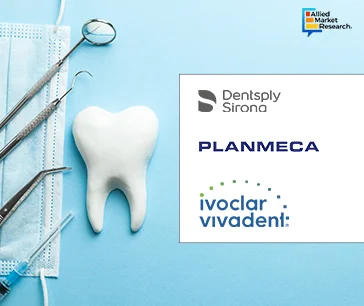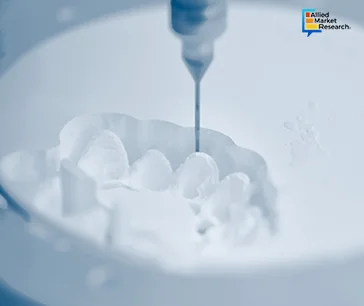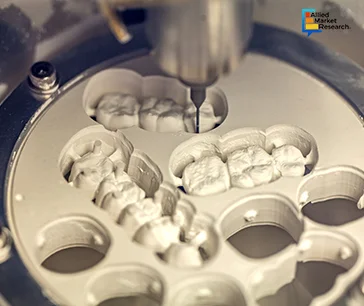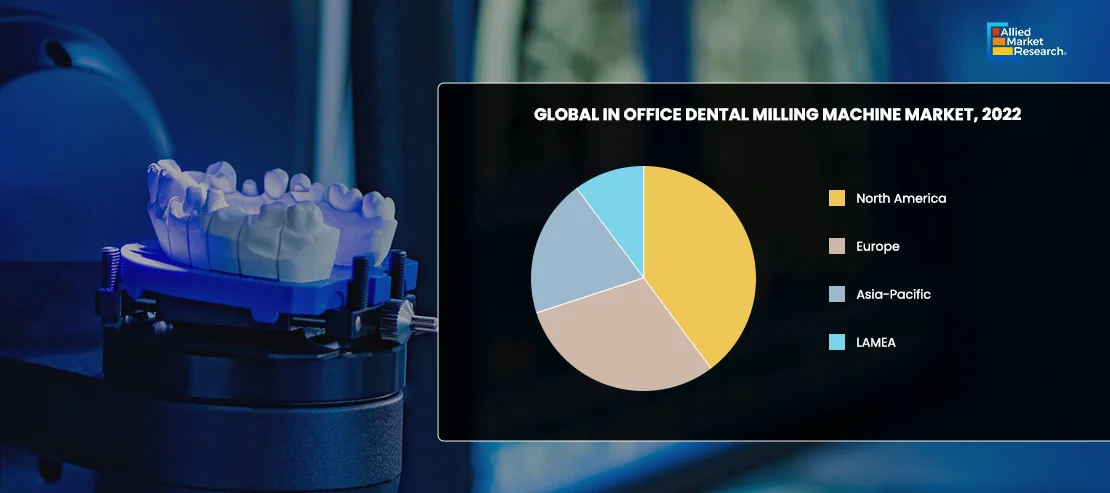Table Of Contents

Roshan Deshmukh

Pooja Parvatkar
Chairside Milling in Dental Practices: Revolutionary Technology in Dentistry

Chairside milling is the process of employing computer-aided design/computer-aided manufacturing (CAD/CAM) technology to fabricate dental restorations, such as veneers, crowns, and bridges, in the dentist's office or clinic. High-quality restorations may now be designed, milled, and placed by dentists in a single session, doing away with the requirement for more time-consuming, conventional procedures that need off-site fabrication in a dental laboratory.
Chairside milling technology in the dental sector satisfies a number of key customer requirements. It significantly reduces the amount of time patients need to spend in dental clinics or hospitals for dental restoration sittings as everything includes the entire process of dental restoration, from initial examination to the final placement of the restoration can be completed in a single appointment. Furthermore, patients who may find it difficult to make several appointments or those with hectic schedules are to especially benefit from the chairside milling technology. Furthermore, chairside milling provides patients with greater comfort and convenience as they do not have to put up with the inconvenience of interim restorations while they wait for their permanent ones to be made off-site. Chairside milling's primary potential applications are veneers, inlays, onlays, crowns, and bridges. Therefore, with the use of this technology, dentists can improve oral health in general, restore teeth that are damaged, and improve appearance.
Current Landscape and Strategies
Leaders in the industry including Dentsply Sirona, Planmeca, and Ivoclar Vivadent, are among the key inventors and firms pushing the development of chairside milling technology. These businesses are investing on R&D to enhance chairside milling systems’ accuracy, speed, and productivity. Recent developments such as product launch and expansion in chairside milling technology have primarily improved CAD/CAM software user interfaces, increased restoration precision, and broadened the spectrum of materials that may be milled. Furthermore, chairside milling has become even more accessible for dental professionals owing to additional streamlining of the process brought about by developments in intraoral scanning technology.

Furthermore, dental diseases are the most common non-communicable diseases and affect individuals throughout their lifetime, which results in pain, discomfort, and disfigurement. Inadequate exposure to fluoride and poor oral hygiene has a negative impact on the oral health of an individual. Thus, the increase in prevalence of dental diseases such as tooth decay, gum disease, dental crack, and dental cavities is increasing the need for dental restoration procedures and subsequently, propelling the dental milling market growth. Increase in incidences of periodontal disease is one of the major risk factors that damages the structure of teeth.
For instance, according to the WHO, in 2022, an estimated 14% adult population was suffering from periodontal disease, representing more than 1 billion cases globally. In addition, rise in sedentary lifestyles, increase in geriatric population, and surge in incidences of dental caries propels the demand for dental restoration. Accordingly, chairside milling technology is essential for the accurate and timely production of dental restorations and has several advantages for both patients and dentists. It improves convenience, accuracy, and patient satisfaction in the dental restoration process by combining sophisticated CAD/CAM software with high-precision milling machines to produce custom-made restorations in a single visit, thus surge in dental restorations drives the chairside milling market.
According to estimates from the World Health Organization Global Oral Health Status Report (2022), oral diseases affect around 3.5 billion people globally, with middle-income nations accounting for 3 out of every 4 cases. 514 million children worldwide suffer from primary tooth caries, whereas an estimated 2 billion adults worldwide suffer from caries of the permanent teeth.
Such a high number of dental caries further worsens as tooth decay leads to the removal of the tooth. As a result, dental restoration serves to be a crucial treatment for restoring the missing tooth, thereby increasing the adoption of advanced chairside milling technology for the manufacturing of dental restoration products such as crowns, bridges, implants, and others
Roadblocks and Challenges
High-cost of dental restorations can cause a major hurdle for the market growth globally. The emergence of technologically advanced materials for dental restoration leads to the market growth. Moreover, in some underdeveloped regions, lack of awareness regarding dental restoration restrains the market growth, owing to lack of oral health services and a lack of elementary education related to oral health management. Thus, this provides a key opportunity for the market players for business expansion of dental milling machines.

Moreover, according to a research study conducted for dental milling machine, the global market for dental milling machines is poised to generate $4633.7 million by 2032 growing at a CAGR of 8.5%.
Due to the high acceptance rate of in-lab milling machines, rise in dental laboratories, and high cost of in-lab milling machines, the in-lab milling machine segment earned the highest revenue in 2022. However, the in-office milling machine segment is anticipated to grow at the fastest rate throughout the projected period as it offers same-day restorations, eliminating the need for several sessions and temporary restorations.
Future Outlook of Market
In the future, the chairside milling technology presents opportunities for innovation and expansion within the dental sector. Development of biocompatible materials for improved durability and aesthetics, integration of artificial intelligence for automated restoration design, and expansion of chairside milling into new fields such as periodontics and implantology are some examples of future capabilities and applications.

Furthermore, chairside milling technology is expected to continue to advance and be widely used due to continuous developments in intraoral scanning, dental materials research, and CAD/CAM systems. To fully utilize this technology, dental practitioners, producers, academics, and regulators will need to continue working together to solve technological, commercial, and social issues.
Risks and Adoption of Technology
Concerns and risks associated with the chairside milling technology include the possibility of mistakes or inaccuracies in the design and construction of restorations, as well as the requirement for appropriate training and certification to guarantee safe and efficient use. Comprehensive education and training programs, along with continuing quality control procedures, can be used in dental clinics to address these challenges.
According to the market analysis, Europe generated its highest revenue in 2022, owing to the strong presence of major key players offering chairside milling, advanced healthcare infrastructure and high disposable income. Furthermore, Asia-Pacific is expected to witness significant market growth during the forecast period owing to the increase in population suffering from dental carries and rise in healthcare investments. This can be explained by the fact that the Asia-Pacific region is distinguished by rapid economic growth, and rising development costs. The introduction of new products additionally encourages market expansion. As a result, the market's players have a lot of opportunities attributable to the aforementioned factors.

Future Prospects
Thus, chairside milling technology is a revolutionary development in contemporary dentistry that provides increased convenience, effectiveness, and precision in the creation of dental restorations for both patients and dental professionals. This method shortens chair times, expedites treatment, and improves patient satisfaction by enabling the manufacture of custom-made restorations in a single visit. Chairside milling has transformed dental restoration procedures by offering accurate, individualized solutions. It has become a vital tool for contemporary dentistry clinics. For further insights, get in touch with AMR analysts.

